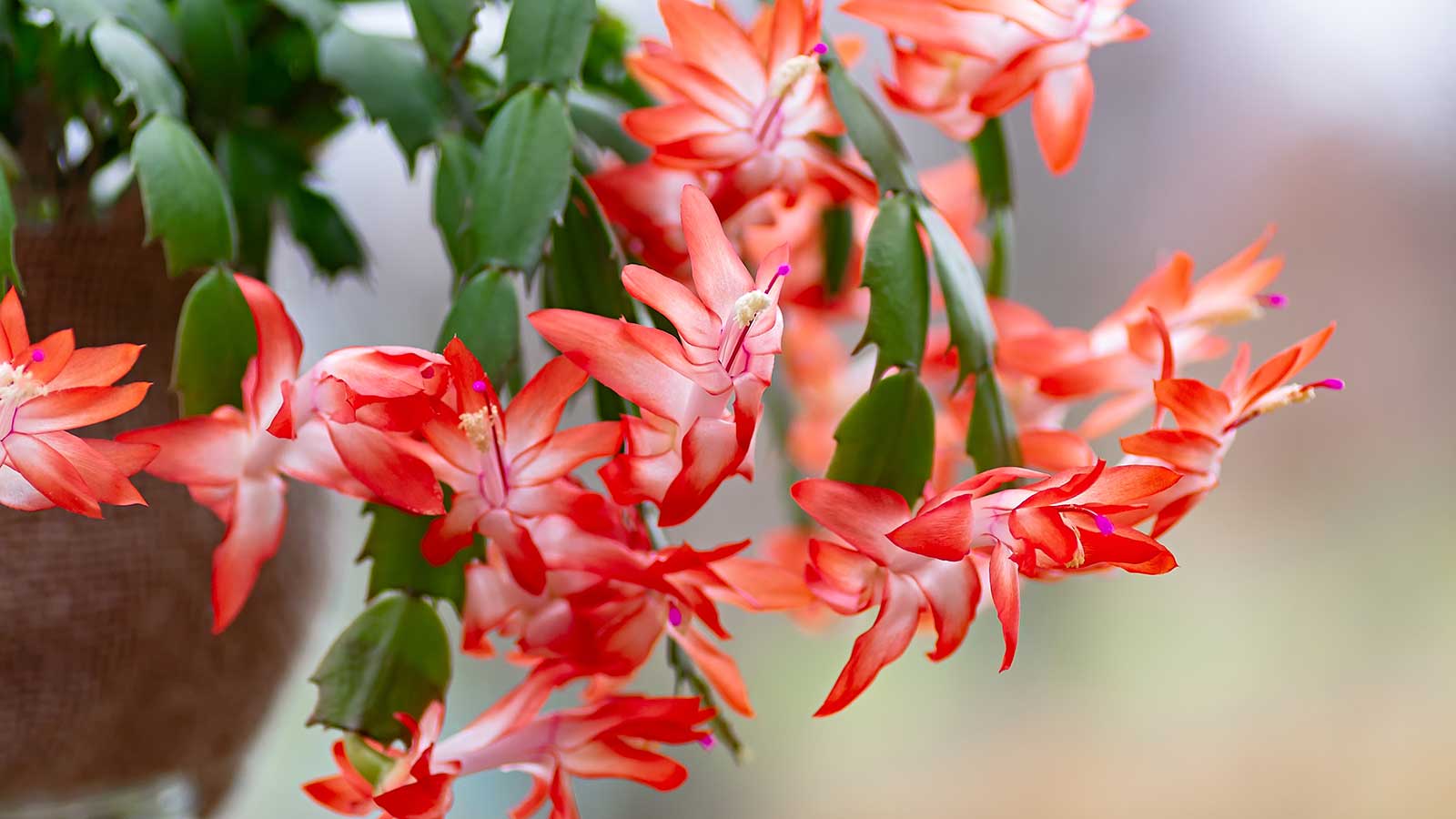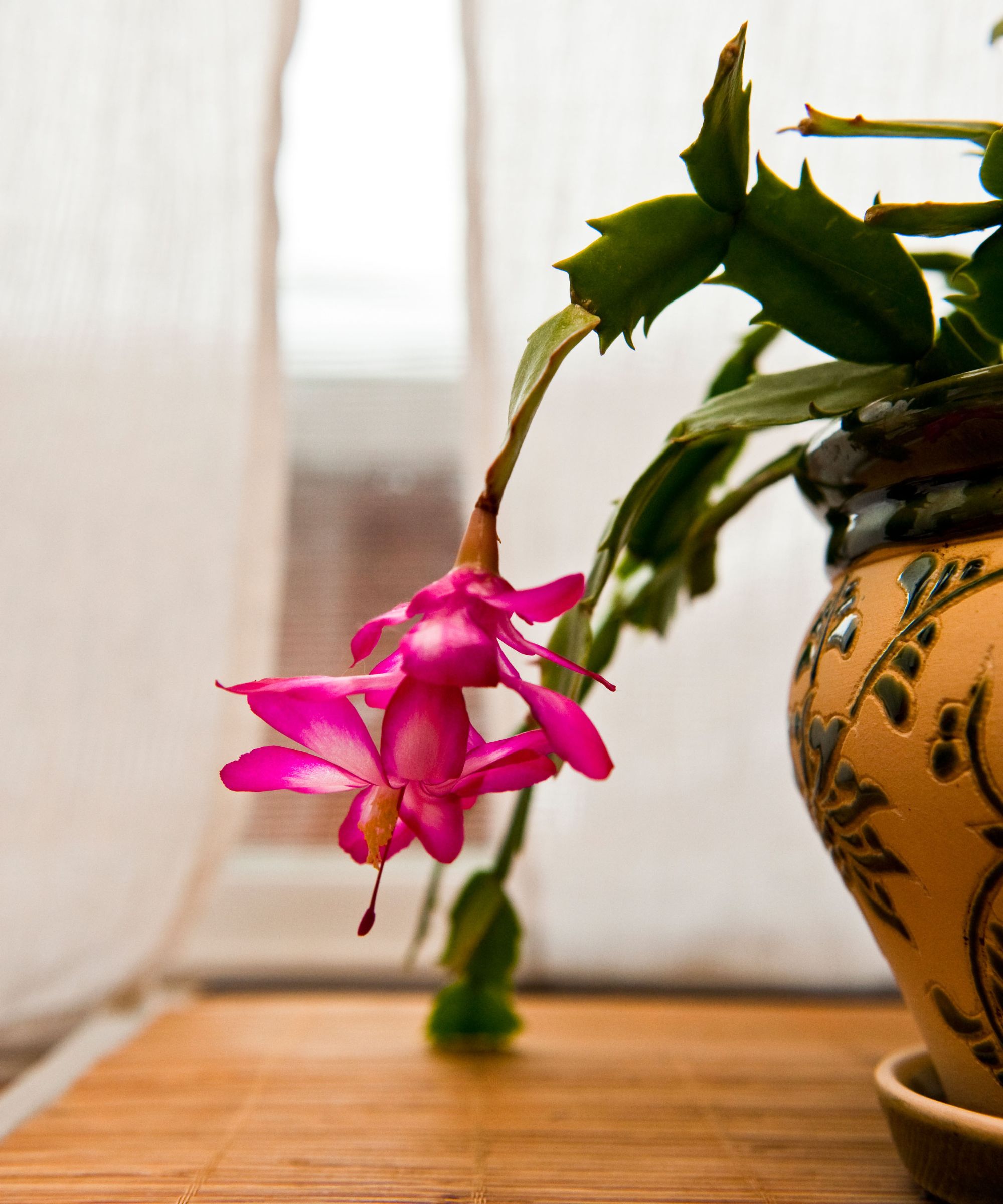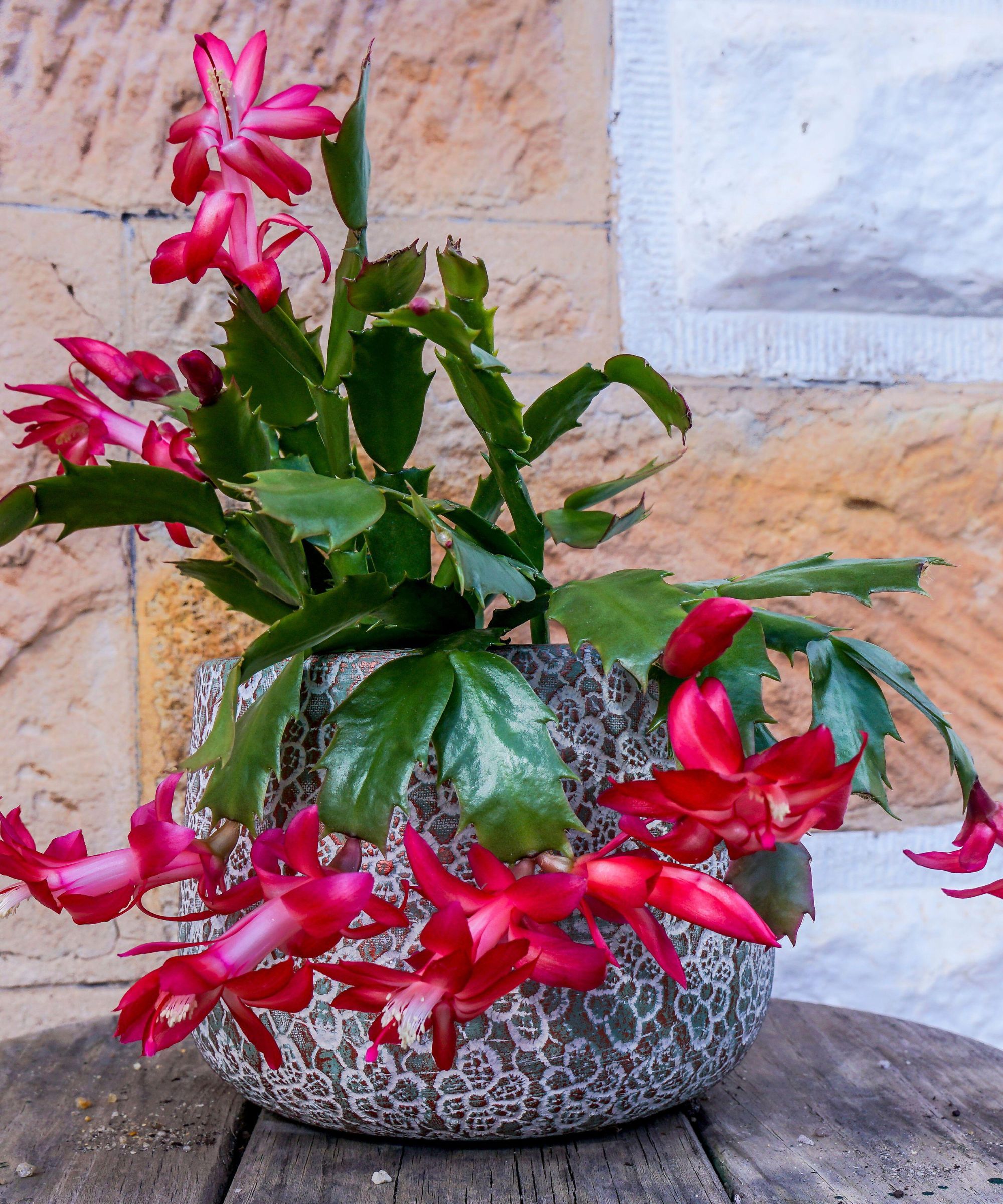Will a Christmas cactus root in water? A step-by-step guide to success
Rooting a Christmas cactus in water is the easiest way to propagate it


Did you know that you can root Christmas cactus cuttings in water to create brand new plants? Experts agree that it's the easiest – and in our opinion, most fun – way to do so. By getting Christmas cactus to root in water, you can watch the new roots form, then plant them into soil two to three weeks later.
I'm a big fan of indoor plants, and love growing a Christmas cactus, but hadn't rooted them in water before. Knowing how to propagate Christmas cactus successfully does require some careful prep.
You will also need to know when to water your Christmas cactus, too, to ensure water remains fresh and the levels sufficient. So, I asked plant expert Vladan Nikolic, the founder of Mr Houseplant for his expertise. This is what he advises.

Will a Christmas cactus root in water?
'Yes, a Christmas Cactus can root in water,' affirms Vlandan. 'The reason why cacti can root in water but die in overwatered soil is because of oxygen availability. Roots need oxygen, and it's easily available in water.
'In soil, however, there is a lot of competition for oxygen. Besides roots, there are many bacteria and fungi that use the oxygen. Water generally doesn't contain as many bacteria and fungi as soil, so the competition for oxygen is lower.
'As the oxygen in soil is being used by these microorganisms, the amount of oxygen goes down, and a different type of bacteria and fungi start developing – anaerobic bacteria.'
This type of bacteria can lead to root rot and eventually kill your plant, so rooting in water is a great option.
Design expertise in your inbox – from inspiring decorating ideas and beautiful celebrity homes to practical gardening advice and shopping round-ups.
How to root a Christmas cactus in water

As Vladan says, and I have since discovered, rooting Christmas cactus in water is easy. All you need is a small, sharp knife or pruning snips, such as these from Amazon; and a small glass vase - these vintage-style bud vases from Amazon are ideal and will look stylish on a window ledge or shelf.
Then follow these simple steps:
- Trim the stem of the Christmas cactus cutting. Use your knife to take a Y-shaped cutting that has a minimum of two segments.
- Next, put pebbles or small, round stones into your chosen vase in a layer around 2in deep, then cover with water.
- Add the cutting to the vase so that only the cut tip to two nodes down are in the water. If you submerge your plant too much it won't root healthily.
- Place your vase in a bright (but not sun-scorched) spot.
- Monitor water levels. The water will be drunk by the cutting and will evaporate in a heated room, so do keep an eye on it, topping it up with fresh water as necessary. Also ensure the water stays healthy; if it starts to develop algae, refresh it. It's a good idea to change it at least once a week.
- Next, you can move on to repotting your Christmas cactus, or you can continue to grow it in water, though you may need to swap it to a larger container as it grows. You can repot your Christmas cactus once roots have formed that are as long as the cutting itself. This can take between three and six weeks. Put the cuttings into a good quality potting mix, combined with a little compost and sand.

Vladan Nikolic, otherwise known as Mr. Houseplant, is a houseplant expert with over 10 years of experience. He is the founder of the houseplant care blog MrHouseplant.com and also an influencer who helps newcomers in the houseplant world become great plant parents. You can find him on Instagram, TikTok, Youtube, Facebook, Twitter and Pinterest.
FAQs
Is it better to propagate Christmas cactus in soil or water?
It all comes down to personal preference, as both methods have pros and cons. However, Vladan Nikolic, the founder of Mr Houseplant, suggests that water propagation is easier for beginners because there is less to think about. You simply place the cutting in water and leave it to root. Though, he notes that this method can come with its downsides.
'The con is that the transition from water to soil might not be successful,' he says.
'If rooting in the soil, you're already growing the plant in its long-term environment, there is no adjustment necessary. However, it is more difficult, as it requires proper watering and potting mix, so it requires a bit of skill.'
To propagate in soil, insert around one quarter of your dried cutting into the soil before placing the pot in a well-lit area avoiding direct sunlight. Water your cutting sparingly to prevent rotting at first, only increasing watering as the plant develops. Once your plant displays signs of growth, such as small red buds on the end of stems, it may be time to repot a Christmas cactus and move the new plant to loose potting soil with a little compost. It can take anywhere between three and 12 weeks for a cutting to take root, however, so patience is needed.
When is the best time to propagate a Christmas cactus?
The best time to propagate a Christmas cactus is when the parent plant has finished blooming and the flowers have fallen away. Late spring and early summer is the best time to take the cuttings, as this also allows plenty of time for fresh cuttings to take root before the holiday gift-giving period.
What's more, taking cuttings and propagating a Christmas cactus at this time should make sure that the new plants are begging to bloom themselves by Christmas, making them look nicer when gifted.
Your Christmas cactus should root after two to three weeks, though, it can take longer in some cases, and it won't be ready for repotting for some six weeks, when the roots are as long as the cutting. To make sure your new plant thrives, you can get clued up on the top Christmas cactus mistakes to avoid, plus understand the exact conditions your Christmas cactus needs to bloom year after year.
Rachel is senior content editor, and writes gardening content for homesandgardens.com, Homes & Gardens magazine, and its sister titles Period Living Magazine and Country Homes & Interiors. She has written for lifestyle magazines for many years, with a particular focus on gardening, historic houses and arts and crafts, but started out her journalism career in BBC radio, where she enjoyed reporting on and writing programme scripts for all manner of stories. Rachel then moved into regional lifestyle magazines, where the topics she wrote about, and people she interviewed, were as varied and eclectic as they were on radio. Always harboring a passion for homes and gardens, she jumped at the opportunity to work on The English Home and The English Garden magazines for a number of years, before joining the Period Living team.
